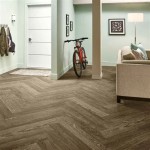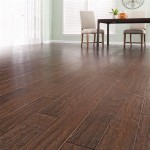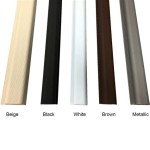Radiant Heat Flooring Options: A Comprehensive Guide
Radiant heat flooring represents a sophisticated heating solution that delivers warmth directly from the floor surface. Unlike conventional forced-air systems that heat the air, which then circulates through the room, radiant heating warms objects and individuals in the space. This method offers several potential benefits, including improved energy efficiency, consistent temperature distribution, and enhanced comfort. This article explores the various radiant heat flooring options available, outlining their characteristics, advantages, and considerations for installation.
The fundamental principle of radiant heat relies on the transfer of thermal energy through electromagnetic waves. These waves warm objects and individuals directly, without significantly heating the air in between. This direct transfer minimizes heat loss through ducts and drafts, contributing to a more efficient heating process. Radiant heat systems can be implemented in various forms, including hydronic (water-based) and electric systems, each with its unique set of characteristics and applications.
Selecting the appropriate radiant heat flooring option requires careful consideration of factors such as the existing subfloor, the desired floor covering, energy efficiency goals, and budget constraints. A thorough understanding of the available options and their respective implications is crucial for making an informed decision.
Hydronic Radiant Heat Systems
Hydronic radiant heat systems utilize heated water circulating through tubing installed beneath the floor surface. A boiler or water heater heats the water, which is then pumped through a network of pipes embedded in the floor. The heated water warms the floor, which then radiates heat into the room. Hydronic systems are generally considered more energy-efficient than electric systems, particularly for larger areas or whole-house heating.
The tubing used in hydronic systems is typically made of cross-linked polyethylene (PEX), polyethylene (PE), or rubber. PEX is a popular choice due to its flexibility, durability, and resistance to corrosion. The tubing is installed in various patterns, such as serpentine or spiral, to ensure even heat distribution across the floor surface. The spacing between the tubing loops affects the floor temperature and heat output, requiring careful planning and calculations.
Hydronic systems offer several installation options. They can be embedded in a concrete slab, installed over an existing subfloor using thinset mortar or a self-leveling compound, or suspended beneath the floor using joist heating panels. Slab-on-grade construction is particularly well-suited for hydronic radiant heat, as the concrete slab provides excellent thermal mass, storing heat and releasing it gradually. Over-subfloor installations require a lightweight material to encapsulate the tubing and provide a smooth, heat-conductive surface.
One significant advantage of hydronic systems is their compatibility with various heat sources, including natural gas, propane, oil, geothermal, and solar thermal energy. This flexibility allows homeowners to choose the most cost-effective and environmentally friendly energy source available. Hydronic systems can also be integrated with zoning controls, allowing for independent temperature regulation in different areas of the home.
The initial investment for a hydronic radiant heat system is typically higher than that of an electric system due to the cost of the boiler, pump, and associated plumbing. However, the long-term operating costs are generally lower due to the higher energy efficiency of hydronic heating.
Electric Radiant Heat Systems
Electric radiant heat systems utilize electric resistance cables or mats embedded beneath the floor surface to generate heat. When electricity passes through the cables or mats, they heat up, warming the floor and radiating heat into the room. Electric systems are typically easier and less expensive to install than hydronic systems, making them a suitable option for smaller areas or supplemental heating.
Electric radiant heat systems are available in various configurations, including loose cables, pre-fabricated mats, and heating films. Loose cables allow for greater flexibility in installation, as they can be spaced according to the specific heating requirements of the area. Pre-fabricated mats consist of cables pre-attached to a mesh backing, simplifying installation and ensuring consistent cable spacing. Heating films are thin, flexible sheets that can be installed directly beneath certain types of flooring, such as laminate or engineered wood.
Electric systems are particularly well-suited for heating bathrooms, kitchens, and other small spaces where a quick and easy installation is desired. They can be installed over an existing subfloor using thinset mortar or a self-leveling compound. The installation process typically involves embedding the cables or mats in a thin layer of mortar or leveling compound, ensuring that they are fully encapsulated and protected.
One advantage of electric radiant heat systems is their ease of control. They can be easily controlled with programmable thermostats, allowing for precise temperature regulation and energy savings. Electric systems can also be integrated with smart home systems, enabling remote control and monitoring.
However, electric radiant heat systems are generally less energy-efficient than hydronic systems, particularly for larger areas. The cost of electricity can be significantly higher than the cost of natural gas or other fuels, resulting in higher operating costs. Electric systems are also susceptible to power outages, which can disrupt heating.
Floor Covering Considerations
The choice of floor covering plays a significant role in the performance and efficiency of radiant heat systems. Certain materials are more conductive and allow heat to pass through more readily, while others act as insulators, hindering heat transfer. Selecting a floor covering that is compatible with radiant heat is crucial for maximizing the benefits of the system.
Tile and stone are excellent choices for radiant heat flooring due to their high thermal conductivity. They readily absorb and radiate heat, providing a warm and comfortable surface. Tile and stone are also durable and resistant to moisture, making them suitable for bathrooms, kitchens, and other areas prone to water exposure.
Concrete is another excellent option, particularly for hydronic systems embedded in a concrete slab. Concrete has a high thermal mass, meaning it can store a large amount of heat and release it gradually. This helps to maintain a consistent temperature and reduce energy consumption.
Engineered wood is a suitable option for radiant heat flooring, provided that it is specifically designed for use with radiant heat systems. Engineered wood is more dimensionally stable than solid wood, meaning it is less likely to warp or crack due to changes in temperature and humidity. However, it is important to follow the manufacturer's recommendations for installation and temperature settings.
Laminate flooring can also be used with radiant heat, but it is important to choose a product that is specifically designed for this purpose. Laminate flooring typically has a lower thermal conductivity than tile or stone, so it is important to ensure that the heating system is sized appropriately to compensate for the lower heat transfer.
Carpet is generally not recommended for radiant heat flooring, as it acts as an insulator, hindering heat transfer and reducing the efficiency of the system. However, if carpet is desired, it is important to choose a low-pile carpet with a low thermal resistance (R-value). It is also important to use a thin, dense carpet pad to minimize insulation.
Regardless of the floor covering chosen, it is important to follow the manufacturer's recommendations for installation and temperature settings to ensure optimal performance and prevent damage to the flooring.
Installation Considerations
Proper installation is crucial for the performance and longevity of radiant heat flooring systems. It is recommended to hire a qualified and experienced installer to ensure that the system is installed correctly and meets all applicable codes and standards. The installation process varies depending on the type of system and the existing subfloor.
For hydronic systems, the installation typically involves installing the tubing in a specific pattern, connecting it to a manifold, and connecting the manifold to the boiler or water heater. The tubing must be properly secured to the subfloor to prevent movement and ensure even heat distribution. The system must also be pressure-tested to ensure that there are no leaks.
For electric systems, the installation typically involves installing the cables or mats on the subfloor, connecting them to a thermostat, and connecting the thermostat to the electrical circuit. The cables or mats must be properly embedded in a thin layer of mortar or leveling compound to ensure good contact with the flooring. The system must also be tested to ensure that it is functioning properly.
Before installing radiant heat flooring, it is important to ensure that the subfloor is level, clean, and free of any debris. Any cracks or imperfections in the subfloor should be repaired before installation. It is also important to ensure that the subfloor is properly insulated to prevent heat loss.
During installation, it is important to follow the manufacturer's instructions carefully to ensure that the system is installed correctly. Failure to follow the instructions can result in poor performance, system failure, or even fire hazards.
It is also important to obtain all necessary permits and inspections before installing radiant heat flooring. Local building codes may require specific installation methods or materials to ensure safety and compliance.
By carefully considering the various radiant heat flooring options available, selecting the appropriate floor covering, and ensuring proper installation, homeowners can enjoy the benefits of warm, comfortable, and energy-efficient heating for years to come.
.jpg?strip=all)
The Best Types Of Flooring For Radiant Heating

Radiant Heating Department Of Energy

Radiant Floor Heating Design Guide Plymouth Plumbers

Average Radiant Floor Heating Cost In 2024 Forbes Home

How To Install Radiant Heat Flooring Forbes Home

Types Of Floorings That Work Well With Radiant Floor Heating H

Understanding Pipe Options In Radiant Floor Heating 2024 06 10 Achr News

Best Flooring To Install Over A Radiant Heating System Today S Homeowner

Radiant Heating Floor Leveling Heated Concrete

Radiant Floor Heating 101 Bob Vila








